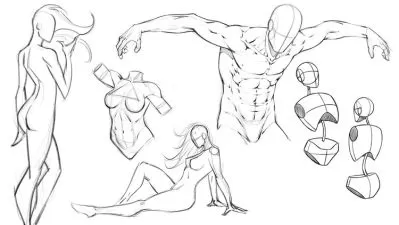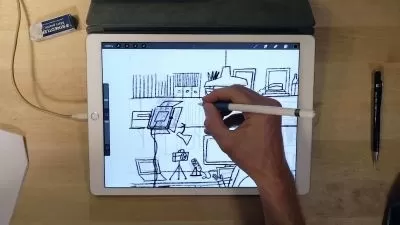About DrawingLearn More
Want to start drawing for fun or take your craft to the next level? Explore our online drawing classes and learn pencil drawing, figure drawing, cartoon drawing, character drawing for cartoons and anime, illustration, sketching, shading and more. Take an overview course on the fundamentals of drawing or zero in on an area you’d like to improve with a specialized course. We’ve got tons of options to get — and keep — you going.
Sort by:
Sorting
The newest
Most visited
Course time
Subtitle
Filtering
Courses
Subtitle
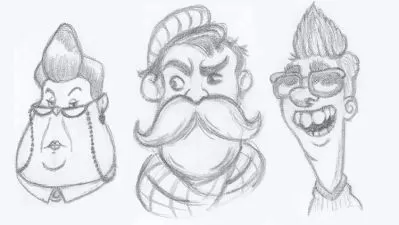
Udemy


Amelie Braun
Ultimate Cartoon Drawing with Pencil: Caricature Skills 7:52:12
English subtitles
03/05/2024
Subtitle
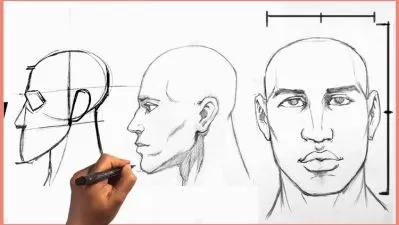
Udemy


Enrique Plazola
How to Draw the Head I Face Figure Drawing Anatomy Course 1:28:01
English subtitles
03/03/2024
Subtitle
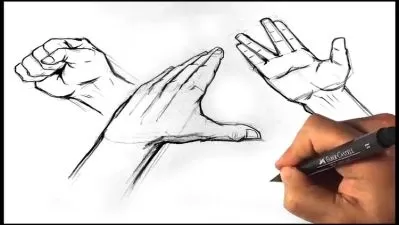
Udemy


Enrique Plazola
How to Draw Hands - Hand Figure Drawing Anatomy Course 53:31
English subtitles
03/03/2024
Subtitle

Udemy


Enrique Plazola
How to Draw Dynamic Anime Poses - Drawing Manga Course 56:03
English subtitles
03/03/2024
Subtitle
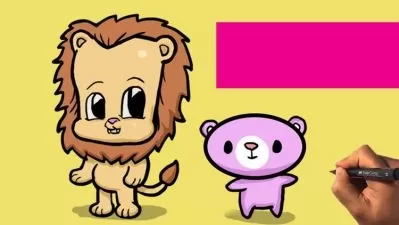
Udemy


Enrique Plazola
How to Draw Cute Animals - Cartoon Drawing Animation Course 46:43
English subtitles
03/03/2024
Subtitle
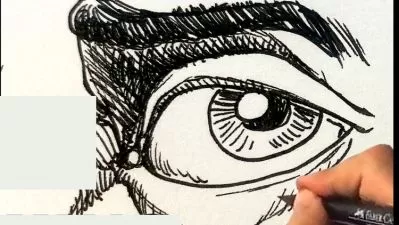
Udemy


Enrique Plazola
How to Draw: Cross-Hatching - Pen and Ink Drawing Sketching 31:03
English subtitles
03/03/2024
Subtitle
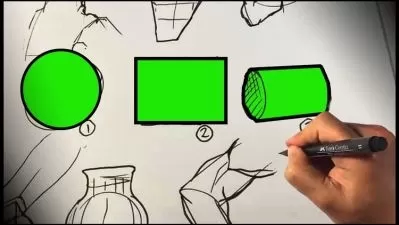
Udemy


Enrique Plazola
How to Draw Anything - Drawing 3D 101 Pen and Ink Course 1:01:24
English subtitles
03/03/2024
Subtitle

Udemy


Enrique Plazola
How to Draw Anime Eyes - Drawing Manga Course 39:02
English subtitles
03/03/2024
Subtitle
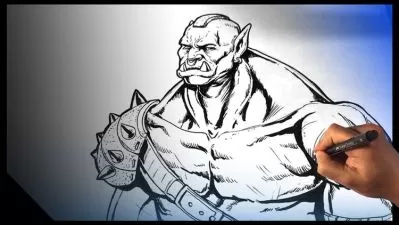
Udemy


Enrique Plazola
How to Draw an Orc - Drawing Cartoon Animation Course 1:30:04
English subtitles
03/03/2024
Subtitle
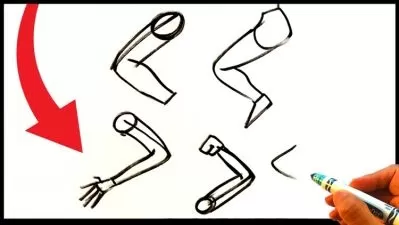
Udemy


Enrique Plazola
How to Draw : One Shape for ANY Arm or Leg I Drawing Pen Ink 32:04
English subtitles
03/03/2024
Subtitle

UdemyHow To Draw A Dragon Head I Cartoon Heads Drawing Animation
1:05:13
English subtitles
03/04/2024
Subtitle
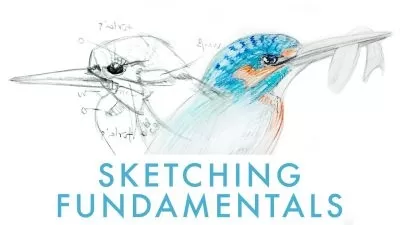
SkillShare


Julia Bausenhardt
Sketching Fundamentals - Learn Basic Drawing Techniques for Nature 7:45:00
English subtitles
02/26/2024
Frequently asked questions about Drawing
Drawing is a visual process of using lines to create forms, shapes, and details to represent ideas. In art, drawing is a fundamental discipline practiced with mediums such as pencils, pens, graphite, or a digital stylus on computers. In the field of observational and imaginative painting, a strong understanding of drawing principles is essential before beginning to learn painting. This is due to drawing's strong focus on understanding forms over understanding light. Drawing, much like reading and writing, is a skill anyone can learn. It's comprised of many theories based on concepts such as light, form, and principles behind the visual world. Lines, often considered abstract and not existing in reality, represent edges, or to some extent represent shadows.
Learning the fundamentals of drawing can take as little as six months, if you study consistently, do practice exercises, and use efficient learning platforms like online video training. Full drawing mastery can take months, to years, depending on the subject or sub-discipline one wishes to focus on. Learning to draw people, for example, requires additional study of human anatomy, clothing, gesture, facial expression, and more, whereas learning to draw environments and interiors, or vehicles, requires studying perspective and industrial design principles. Each sub-field of drawing varies in complexity. The time it takes to learn one may be longer, or shorter, than another.
Drawing is a broad field. It includes artwork, animation, commercial use like design and marketing, industrial design, conceptual design, technical architectural design, landscaping, vehicle conceptualization, leisure, and much more. Drawing is a form of visual communication. Almost any idea can be communicated through drawing. In a purely artistic sense, drawing categories range from topics such as still life, landscape, architectural, portraiture, and planning, to drawing animals, designing objects and set pieces, and creating interior and exterior spaces.
Still life drawing, also known as observational drawing, is creating an image with lines by utilizing visual references in reality as a guide. They can be either real-life references, such as a landscape or person in front of you, or photo references. Examples of still life drawing include a bowl of fruit on a table, a portrait of a person as they sit in front of you, or a beautiful landscape. Mastery of still life drawing comes from learning to dramatize and exaggerate, as well as add one’s own unique stylistic traits to the drawing of the subject. The goal of still life drawing is to capture an observed moment in time and communicate that moment in an aesthetically-pleasing way. Using compositional theories, and having a trained eye to measure proportions will help you learn to draw still life well.
When you learn how to draw, that helps set the stage during your journey as an artist. Drawing helps you identify the styles you prefer while simultaneously educating you on form, light, shadow, and shape. Learning how to draw before painting also pushes you to think about color composition, form, light, material use, and texture. It also helps you develop your style without replicating another artist's work. For example, when sketching a scene, the pencil's strokes interpret the drawing's form and shape. When you draw continuously, that helps loosen your muscles and achieve a seamless expression. Drawing trains your eye to see an object's shape instead of drawing what your brain thinks is already there. Having this skill enables you to balance your pencil strokes because you're paying equal attention to each painting element you're planning with this sketch.
You can definitely turn your passion for drawing into a career. Many roles require specific knowledge of mediums like CAD (Computer-Aided Design) programs, oil pastels, acrylics, painting. Fashion design is a popular career where illustrating new styles for target consumers using hand-drawn sketches or CAD is a part of the job. Animators also use their drawing skills extensively. Their day-to-day involves creating moving images for animated films, cartoons, and video games. Another path is the graphic design career. You would use your drawing skills to craft original images for clothing, logos, print media, signs, and websites. If you enjoy teaching others how to draw, an art teacher role might be fulfilling. These state-certified instructors work in every education level, from preschool to college, teaching students various art mediums and drawing methods.
The back and forth method is an approach challenging artists to move drawing instruments across the page in a level, uneven motion. Pressing harder creates a darker drawing. A technique for when you're using charcoal or pencil is blending. Start with the back and forth technique, cover the page with a drawing, and use a blending stick, chamois cloth, or your finger to blend. Cross-hatching is a technique that creates intersecting lines with a cross-like formation. Hatching makes tiny ticks on your paper parallel to each other. The closer a line is to another, the darker it'll look. Use lines further apart to create highlights. The scribble technique allows you to move quickly over the page. Begin moving the pencil in random formations and, in areas where you want it darker, spend more time scribbling. Stippling is a technique for artists who love creating meticulous details. It involves creating tiny dots on the page to develop highlights or shaded areas.
When learning how to draw, we become better thinkers because our minds always think about new ways to create things. Learning how to draw is an excellent way to reduce stress and express your inner thoughts or feelings in an illustrated form. Drawing also opens the door for many career opportunities. For example, you can explore careers as an architect, criminal sketch artist, industrial designer, multimedia artist, and more. Learning how to draw can also develop better coordination, dexterity, fine-motor skills, and mobility when drawing in long, slow stroke or doing meticulous shading across the page.






